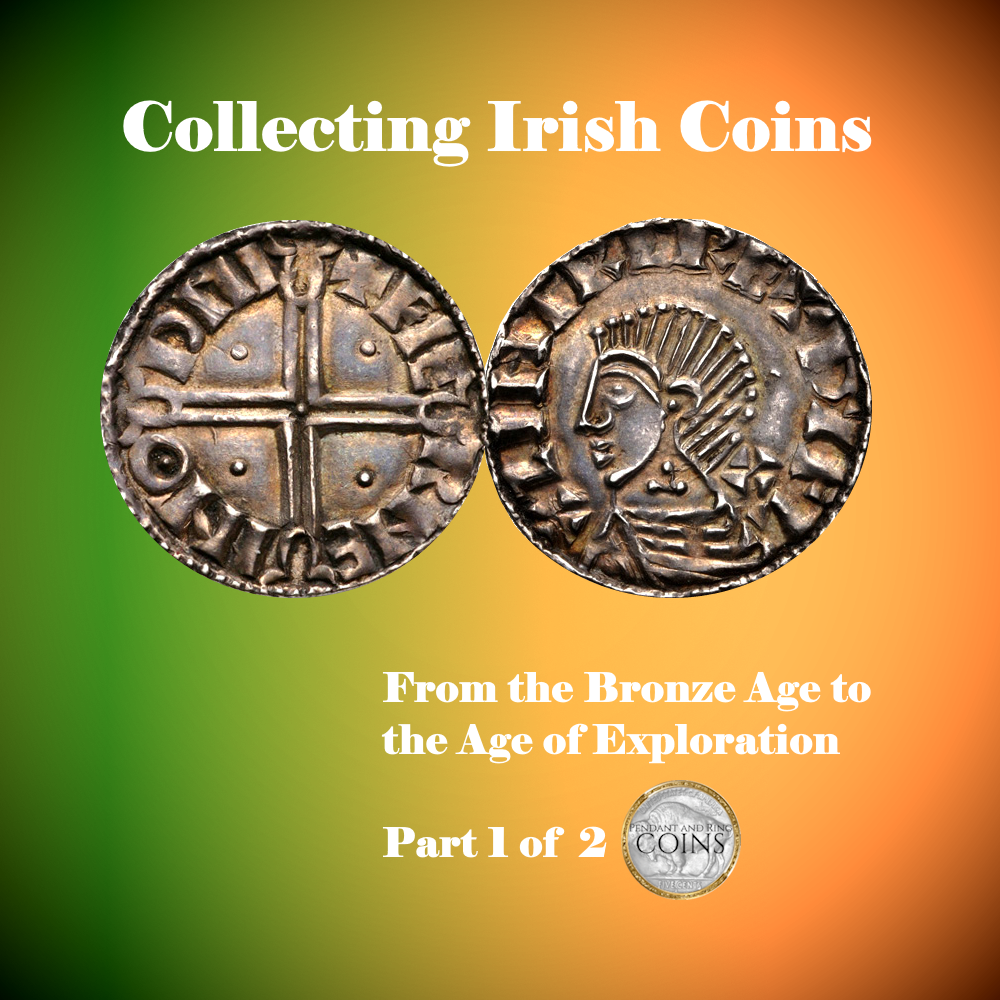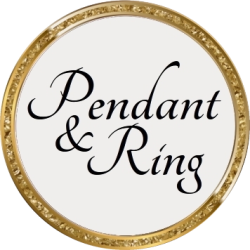As a born clover-growing, dairy, and potato person, I love Irish coins and think Irish coins are a great way to start your International Coin Collection.
Irish coin history is full of starts and stops and predates the internal use of coins. Irish people favored barter and trade until just over 1000 years ago. Ireland produced Silver, Copper, Bronze, and Cupro-Nickle coins. Other coinage in Ireland includes Celtic, Greek, Roman, Ottoman, and British coins.
The history of Empire coinage is beyond the scope of one article, so this is part one in a two-part series. Both articles will be published this week. Subscribe to get the second half of the story!
Now, let’s jump in the time machine and travel back to the Bronze Age.
Timeline of Irish Coinage
Before Coins in Ireland
- The first Irish wealth tokens were metal fasteners and ornaments made during the Bronze Age.
- The Celts arrived at the dawn of the Iron Age with Celtic Ring Money. One Celtic Ring Money is a small, typically uneven, gold, silver, or bronze, sloping circle with variable weight, thickness, and diameter. Celtic Ring metal was sometimes twisted or hammered before shaping the ring.
The Celts were the first culture to bring money as first-stage simulacra to the Emerald Isle. Celtic Ring Money was a simulacrum because it was still a tool in its own right. Made to facilitate trade, early Celtic Ring Money retained its object-usefulness as a fastener. As money, it was easy to carry strung on a necklace.
Be careful collecting Celtic Ring money because some unknowing (or unscrupulous) dealers pedal spindle whorls. Read this short Q&A about Celtic Ring money to avoid that stray sod.
The First Coins in Ireland
- Treasure hunters and archeologists unearth the occasional Greek coin in Ireland. These coins were probably brought home as souvenirs, or exchanged by travelers. As far as historians can tell, these coins were not used for daily trade.
- The Roman Empire brought coins to the Island and took most of them with them when they left. Some gold and silver coins remain, but few copper pieces, especially when compared to other places under the Roman Empire umbrella.
- After the fall of Rome and the Muslim conquest of Persia, Dirham coins appeared in Ireland. Like their Greek and Roman predecessors, these coins were not really used as money but also kept for novelty.
- The Vikings were the next wave to flow into Ireland. They traded in precious metals including but not limited to coins. Their plunder brought many coins to the Irish shores and still the local Irish maintained their own systems of coinless trade. The far-traveling Vikings showed the Irish that there was wealth in long-distance trade, and it was at this time that the Irish began trading in coins with other nations.
Ireland’s First Coins
- Following the Gaelic Conquest of Dublin in 995, the Irish Royal Mint was opened to support trade between the Kingdoms of Ireland, and the wider world.
- For about 100 years The Royal Irish Mint produced silver Sihtric Anlafsson and Anonymous Longcross pennies.

Sihtric Anlafsson (Sigtrygg II Silkbeard Olafsson) was the politically minded King of Dublin for 46 years. He was of Irish and Norse ancestry and supported whichever political factions would keep him in power. His only son died in battle although his daughter lived. He was succeeded by Echmarcach mac Ragnaill, who may have been a kinsman in 1036. Sihtric died at 72 in 1042, but his lineage continued through his daughter. Her grandson Gruffudd ap Cynan, reclaimed the Welsh Kingdom of Gwynedd by killing Trahaearn ap Caradog in 1075.
A Decline in Quality
- As the Kingdoms of Ireland and neighboring communities fought among themselves the production of coins suffered. Soon the coins were thin hammered planchets with a single design that ghosted through to the other side.
The Norman Invasion
- Norman coinage from England swept over the island. In 1251 English King Henry III reopened the Dublin Mint.
- The newly minted coins retained the long cross design on the reverse and showed the King’s portrait or a crown on the obverse until the Age of Exploration.
In the 1400s the fineness (silver content) of Irish coinage varied widely. As the Imperial British coffers grew and shrunk with the expenses and ill-gotten gains of war, the mint produced thinner or thicker, finer or ruder alloyed silver coins for use in Ireland. At one point in time, an Irish coin could be .999 silver, and at another point, the same face-value coin could contain as little as .400 silver.
The Age of Exploration changed colonialism. Territory expansion for monetary gain required nations to streamline and standardize economic practices and that greatly affected Irish coinage.
This is a great place to take a break.
You can read the conclusion of this Timeline of Irish Coinage here on Pendant and Ring.
See you after the jump!

What do you think?